14 Oct Tips to stay StudyFit during exams
Is study contributing to neck pain, headaches or back pain?
You’re not alone!
As students enter the final stretch of exam study for the year, it is common to adopt sustained (often undesirable) postures while reading, typing or writing. A combination of reduced physical activity, increased stress, reduced sleep quality and sustained sedentary postures can ALL contribute to neck pain, headaches and back pain – particularly at this time of year.
Top tips to reduce pain this exam period
1.VARY your posture!
The slumped forward seated position characteristic of ‘bad’ posture is a very common one that many believe causes pain and stiffness. However, seated upright in ‘good’ posture for prolonged time may also cause similar issues. What’s the bigger underlying problem here? Lack of movement!
If you can vary your studying posture and move around where possible, your body will thank you for it.
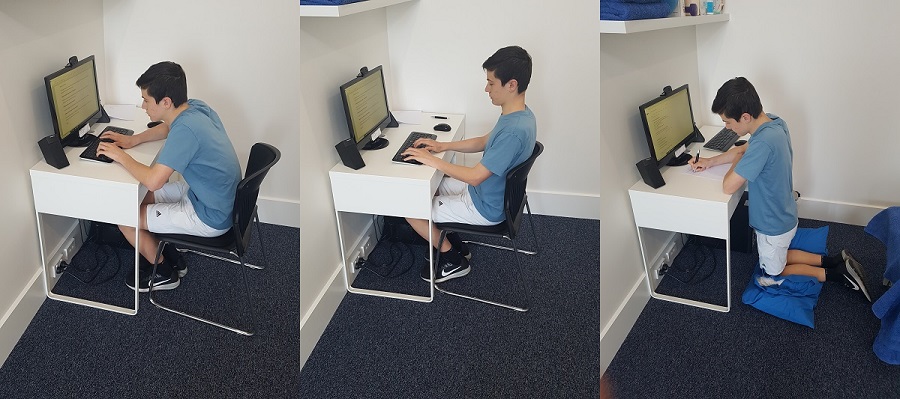
Instead of ‘bad’ posture and ‘good’ posture, think of these as examples of many postural variations
Seb’s StudyFit Tip: Try reading an article while lying down, or while standing at a higher (e.g. kitchen) bench to break up your sitting time.
2.Hourly exercises for study mini-breaks
Inevitably you will spend more time with your head and neck forward, shoulders rounded and upper back slouched forward. These exercises focus primarily on extending through these areas- ie putting them in the opposite direction.
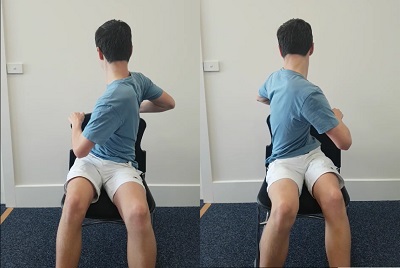
Thoracic rotation
– rotate your upper body as far as you can while maintaining even pressure through both buttocks. Hold for one second, then slowly move to the opposite direction
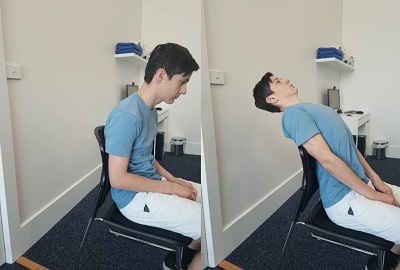
Thoracic extension
– arch your head, shoulders and upper back over the backrest of the chair as far as you can. Hold for one second, then slowly return to the start position.
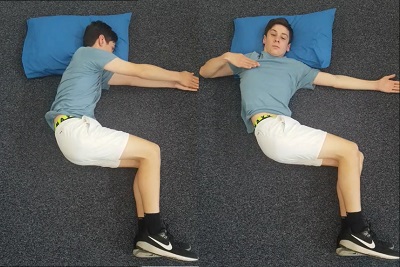
Bow & arrow
– maintain hip alignment with one ‘stacked’ on top of the other while you rotate your upper body. Imagine drawing a bow back with your top hand while the bottom hand holds the arrow.
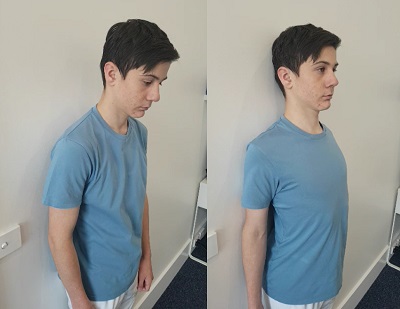
Wall shoulder blade retraction
– stand in relaxed position with back against a wall. Squeeze your shoulder blades together as you stand tall, looking forwards.
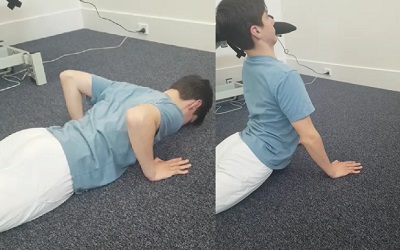
Cobra
– press through your hands to lift your upper body off the ground in sequential order: forehead, chin, shoulders, and then chest. Your elbows don’t have to reach straight – simply extend as high as comfortable before slowly lowering yourself down in reverse order.
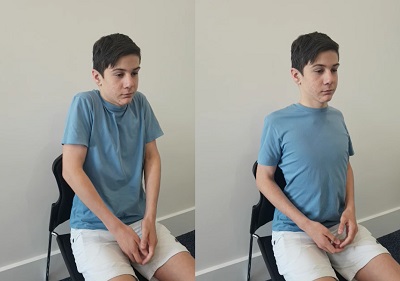
Shoulder rolls
– roll your shoulders backwards in a circular motion.
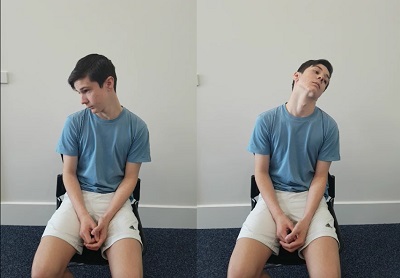
Neck rolls
– roll your neck around in a circular motion – slow and controlled.
Seb’s StudyFit Tip: The emphasis is on slow, controlled continuous movement rather than long, static holds. Do each exercise for 30-45 seconds.
3. Continue regular exercise as much as possible
Whether its gym, Pilates, yoga, walking, running, organised sport or anything else that gets you moving, keep this up during periods of intense study. It aids not only with issues of pain and muscle stiffness, but also helps stress management and improves quality of sleep.
Seb’s StudyFit Tip: Set a reminder/alarm on your phone or computer to tell you when to take an exercise break.
4.If you’re still in pain – seek help!
Despite the advice above, if you’re still in pain it is worth seeking professional advice.
Seb Evans (Physiotherapist) consults Mon-Thu and Sat mornings. Bookings can be made ONLINE HERE or calling our friendly reception on 8840 8066.


